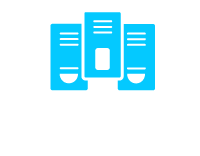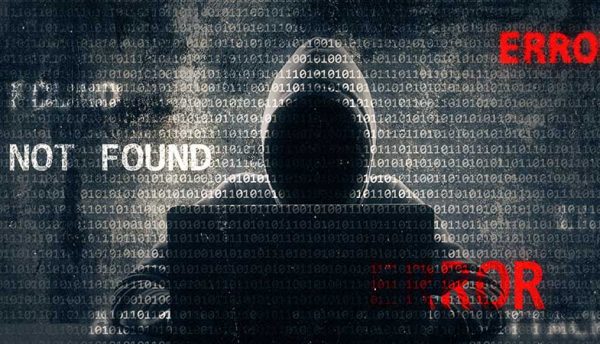As the amount of data in existence surges, business leaders must ensure they have the correct processes in place to manage it and avoid data loss. A number of industry experts offer their best practice advice on the methods used to prevent data loss and how to make the most of backup strategies.
During the pandemic, organisations across every industry were forced into making the sudden switch to remote working, changing the way those organisations used and viewed their data. With employees needing remote access from outside the security of the workplace, cybercriminals took advantage of an increasing number of unsecured networks and endpoints.
To protect against the damage that could be done should a cyberattack – or even a natural disaster or simply human error – occur, businesses have recognised the importance of secure backups and watertight disaster plans more than ever before. We spoke to five industry experts to get their thoughts on why backups are so essential and how business leaders can make sure they’re protected.
The COVID effect
The impact of the past 18 months on data usage has been phenomenal. John Day, Sales Engineering Leader, UK&I and Nordics at Commvault acknowledges how businesses have been “experiencing the data explosion impact of remote working, and the data sprawl that this has brought to their environments. This coupled with the knee jerk reactions that businesses were forced to undertake to tackle a world hit by the pandemic, has taken its toll.
“The acceleration of collaboration technology, cloud adoption and SaaS offerings with elasticity, is top of mind, and due to the uncertain times, meant that organisations were forced to act first and revise later. This approach was necessary for businesses to minimise the impact and in some cases, was needed for survival, but as you can imagine this has left a wake of fragmented data and dispersed technologies that need to be protected for compliance as well as Business Continuity.”
Why backups are critical
This is where backup comes into play. Steve Cochran, Chief Technology Officer at ConnectWise explains why all organisations need to have a Disaster Recovery plan that includes sufficient backups.
“Data is the livelihood of organisations – whether that’s a hospital, law firm or a bank – and without having instant access to it can cause unplanned downtime that can affect operations. Hardware failure, cyberattacks such as ransomware or even a natural disaster can cause serious problems for businesses, because the risks associated with data loss can be severe. Hospitals need instant access to patient data and if the database has been compromised and they can’t access it then lives could be at stake. This is why it is absolutely essential to ensure organisations of all sizes, including SMBs, have a backup and Disaster Recovery (DR) plan in place. This way organisations can resume normal business operations as quickly as possible while minimising the impact or damage associated with such an event.
“Backup is a basic defence against malware like ransomware. Having backups and a DR strategy in place to be up and running instantly means you’re better prepared to tackle challenges head on and minimise any impact to your end customers. No matter what bad guys do to a computer or system, if you have a backup you are ultimately safe.”
In the past couple of years, “we’ve seen some of the most sophisticated global cyberattacks uncovered,” according to Andy Collins, Head of Security at Node4, “and several high-profile data breaches have already hit the headlines in 2021. With bad actors taking advantage of the rapid move to widespread remote working, 2020 was described as a ‘record-setting year’ for cybercrime in a report from SonicWall that highlighted a 62% spike in global ransomware attacks, a 28% increase in cryptojacking detections and a 74% increase in previously undetected malware variants.
“Many of these were the result of social engineering attacks, highlighting how crucial the human element is to cybersecurity and how simple decision-making can be manipulated to expose vulnerabilities in an otherwise secure corporate network. However, human vulnerabilities in security posture go far deeper than phishing attacks. The cognitive bias of the human brain can lead to a false sense of security around prevention strategies and a lack of focus on backup and recovery. From overconfidence bias to loss aversion, humans are innately more likely to focus on avoiding negative outcomes – prioritising prevention over backup and recovery provision. These solutions provide continuity in the case of what is fast becoming an inevitability for most organisations – they should be seen as essential components of any IT security plan but are often overlooked.”
Keep cloud security top of mind
A report from Flexera revealed that optimising existing cloud use remained at the top of companies’ 2020 priority list for the fourth year in a row, followed by migrating more workloads to the cloud. Terry Storrar, Managing Director at Leaseweb UK, explains how backup makes the move to the cloud easier than ever.
“One benefit of modern cloud backup solutions is that they are suitable for businesses of any size, enabling data backup from any server or device, anywhere with an Internet connection. Cloud backup solutions are easy to manage and their providers offer reliable, hands-on customer support.
“At Leaseweb for example, we take every necessary precaution to ensure that our customers’ data is available around the clock. This includes the availability of emergency backup services, such as batteries and generators, in case of power outages. Agreements are also in place with energy suppliers for redundant energy connections that enter the data centre from different locations, redundant Internet connections and an agreement with local authorities for evacuation work to reduce possible damage to any important cables. In the event of a disaster, it’s important to keep in mind that a proactive plan for backing up data to ensure Business Continuity always has multiple moving parts to consider; working with the right providers and products can help you rest easy at night.”
Tom Cotton, Agile Workspace Technical Director at Six Degrees, encourages businesses to be fully informed about their public cloud choice before pressing ahead.
“If your organisation is transitioning workloads to public cloud, you may well have concerns around losing control of your data. These aren’t unfounded – SaaS providers take backups to ensure the integrity of their services, but they will not take responsibility for data loss that results from accidental deletion, malware or operational errors.”
Cotton advises organisations to consider how they protect data stored in public cloud environments. “I recommend partnering with a trusted data protection provider to hand control of your mission-critical data back to your organisation.”
Backup 101
To conclude, Commvault’s John Day adds a final comment on best practices around data backups.
“Businesses should backup their data by starting in reverse. Effective backup really starts with the recovery requirements and aligning to the business needs for continued service. Ensuring you have the right recovery solution that aligns to the criticality of the application and data, while balancing the cost to the business, as well as the simplicity of operations. For example, with Office 365, protecting email and information held in collaboration tools, using an SaaS solution enables customers rapid deployment of protection capabilities, without the overhead of building and maintaining traditional, self-created data protection services.”
Click below to share this article


